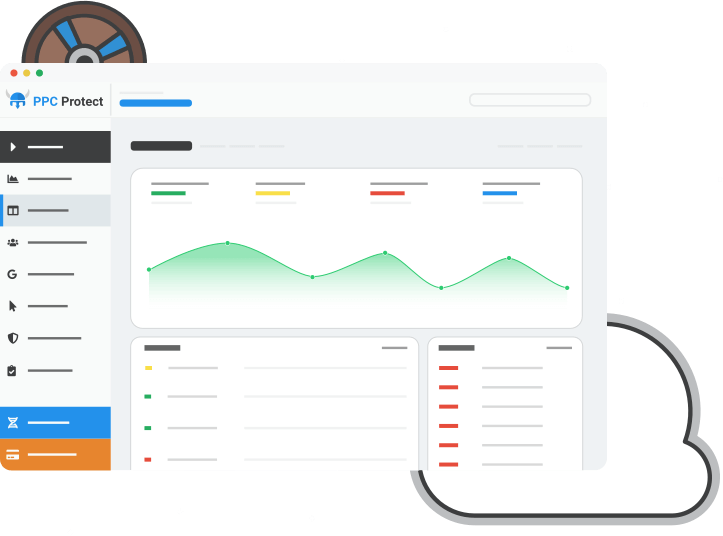Protecting Ecommerce Stores From Click Fraud & Ad Fraud
Posted on April 20, 2020 (Last Updated: January 25, 2024)
Paid search ads are a crucial marketing strategy for many ecommerce businesses out there. From Google ads to Facebook and Instagram ads, these digital mediums drive the majority of traffic and customers to ecommerce stores.
But unknown to many business owners, there's a dark secret about paid search ads that not many people are talking about and are costing businesses billions every year.
Known as click fraud, this type of fraud affects every 1 in 5 ads and could be happening to anyone's ads.
To ensure you're not a victim of click fraud, here's what you need to know about it and how to fight back.
What Is Click Fraud?
For many ecommerce store owners, the concept of click fraud is entirely brand new and can sound very confusing. But once you understand how the pay-per-click advertising model works, it's easy to see how people can take advantage of it.
In a basic pay-per-click advertising model, an advertiser bids against other advertisers to determine whose ad is displayed in which spot. The person who pays the highest gets the number one spot which usually receives the most clicks and traffic. Every click the advert receives, the advertiser must pay the amount they were bidding which can range from a few cents to tens of dollars.
Since the advertiser is liable to pay for every click they receive, regardless whether the visitor converts or not, this leaves the model vulnerable to click fraud.
Click fraud can be defined as:
The fraudulent clicking of pay per click adverts to generate fraudulent charges for advertisers.
This means that fraudsters deliberately click businesses ads with no intention of ever buying their products or services, just to waste their ad budget. Since advertisers received the clicks, they still have to pay for them even though they never had any interest or intention of buying in the first place.
While click fraud is the defrauding of pay-per-click ads and campaigns, the term ad fraud is a more general term used to describe any fraudulent activity on digital advertising.

Since most ecommerce stores use pay-per-click marketing on Facebook, Instagram and Google, we'll specifically be taking a closer look at click fraud and who's responsible.
Who's Responsible For Click Fraud?
Now you have a good understanding of what click fraud is, who's responsible for it? And what are their incentives to do it?
The main offenders can usually be split into four different categories.
Competitors
One of the most common offenders has to be competitors who are also running ads on the same keywords and platforms. Since they understand that advertisers have to pay for every click they receive, its a common tactic for some competitors to click other companies ads and waste their money.
Webmasters
Many websites run adverts to generate ad revenue for themselves through networks such as Google Adsense. Since webmasters get paid a percentage for every click they receive on their website's adverts, many have an incentive to click their own ads to increase their earnings and revenue.
Customers
It's entirely reasonable for customers to click ads multiple times when comparing a company's prices and products. However, some disgruntled customers will deliberately click on a company's ads to cost them money in "revenge" for lousy service, support or unaccepted returns.
Fraud Rings
In recent years, entire fraud rings and schemes have been set up around click fraud. By creating an extensive network of websites and publishing ads, criminals can fraudulently generate ad revenue by clicking on their own adverts.
At a large scale, this can be very profitable and cost advertisers millions.
How To Protect Yourself From Click Fraud
With click fraud being a severe problem for all businesses and ecommerce stores, what's the best way to go about tackling it?
You'd think the big advertising companies like Google would be doing something to protect their advertisers from this type of fraud. Well, they are, but they could be doing a lot more.
Currently, Google does offer invalid click refunds, but those are mainly granted for other reasons not relating to click fraud. Thankfully, there are a few ways you can combat click fraud yourself without having to rely on Google.
When it comes to assessing if you've been the victim of click fraud on your ads, you'll have to get technical. To make things tricky, Google doesn't provide users with the IP address of people who click on their ads. This means the only way to get any identifiable information is to either using a tracking script or to check through your server logs.
This process can be very time consuming, especially when you are running lots of ads, but with Google not providing this vital information, there aren't many other alternatives.
Once you've identified repetitive IP addresses that are continually showing up in your server logs or are being tracked as clicking your ads, it's time to do some research. There are plenty of IP location tools out there that can give you a good idea of where that IP address is located.
This should be able to provide you with information as to whether it's a competitor, customer or robot. When you find a physical address, it's time to exclude them from seeing your ads.
Excluding IP Addresses & Competitors
If you've identified someone or something that is continually clicking your ads and costing you money, then its time to take action.
The first and easiest way to stop someone from repeatedly clicking on your ads is to block their IP address using the Google Ads exclusion list. Simply adding their IP address will stop them from seeing any of your ads in the future.
But what if they keep changing their IP address by using a VPN (virtual private network) or a different device?
Another effective way to stop people from seeing your ads is to focus on geographical areas instead of individual IP addresses. If you're sure the fraudulent clicks are coming from a competitor's offices, then the easiest way to stop them would be using a geographic location exclusion.
By following Google's guide on geographic exclusions, it's possible to exclude any area on a map and set a radius as well. This makes it perfect for targeting your competitor's offices and a radius around them to be safe.
As you can see, the entire process of excluding IP addresses is rather long and time-consuming. Luckily, the entire process can be automated, saving you both time and money while letting you get on with managing your ads and business.
Click fraud protection services like PPC Protect will automate this entire process for you, ensuring only legitimate users are clicking your ads. With no settings to configure, this means any business can get set up within just a few minutes and protect their ecommerce store from unwanted fraudsters.
Now you understand the dangers of click fraud and what it can do to your business, the only question is: what are you going to do about it?

Sam is the marketing manager at PPC Protect, an award-winning click fraud detection tool that helps Google Ad users get the most out of their advertising budget.



